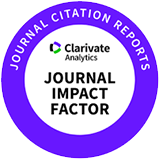Article
The prevalence of causative agents of calf diarrhea in Korean native calves
Jeong-Byoung Chae1, Hyeon-Cheol Kim2, Jun-Gu Kang3, Kyoung-Seong Choi4, Joon-Seok Chae1, Do-Hyeon Yu5, Bae-Keun Park6, Yeon-su Oh2, Hak-Jong Choi7,*, Jinho Park8,**
Author Information & Copyright ▼
1Research Institute for Veterinary Science and College of Veterinary Medicine, Seoul National University, Seoul 08826, Korea.
2College of Veterinary Medicine and Institute of Veterinary Science, Kangwon National University, Chuncheon 24341, Korea.
3Korea Zoonosis Research Institute, Jeonbuk National University, Iksan 54531, Korea.
4College of Ecology and Environmental Science, Kyungpook National University, Sangju 37224, Korea.
5Institute of Animal Medicine, College of Veterinary Medicine, Gyeongsang National University, Jinju 52828, Korea.
6College of Veterinary Medicine, Chungnam National University, Daejeon 34134, Korea.
7Microbiology and Functionality Research Group, Research and Development Division, World Institute of Kimchi, Gwangju 61755, Korea.
8Department of Veterinary Internal Medicine, College of Veterinary Medicine, Jeonbuk National University, Iksan 54596, Korea.
*Corresponding Author: Hak-Jong Choi, Microbiology and Functionality Research Group, Research and Development Division, World Institute of Kimchi, Gwangju 61755, Korea, Republic of. Phone: +82-62-610-1729. E-mail:
hjchoi@wikim.re.kr.
**Corresponding Author: Jinho Park, Department of Veterinary Internal Medicine, College of Veterinary Medicine, Jeonbuk National University, Iksan 54596, Korea, Republic of. E-mail:
jpark@jbnu.ac.kr.
© Copyright 2021 Korean Society of Animal Science and Technology. This is an Open-Access article distributed under the terms of the
Creative Commons Attribution Non-Commercial License (http://creativecommons.org/licenses/by-nc/4.0/) which permits
unrestricted non-commercial use, distribution, and reproduction in any
medium, provided the original work is properly cited.
Abstract
Infectious calf diarrhea is one of the most significant diseases of neonatal calves. This study is conducted to identify the prevalence of pathogens in calf diarrhea for 2 years. A total of 544 feces samples from Korean native beef calves were obtained to investigate selected seven pathogens causing calf diarrhea: bovine rotavirus, bovine coronavirus, <italic>Cryptosporidium</italic> <italic>parvum</italic>, bovine viral diarrhea virus, <italic>Eimeria</italic> species, <italic>Escherichia</italic> <italic>coli</italic> K99, and <italic>Salmonella</italic> species. The presence of diarrhea, the number and species of detected pathogens, and the calves’ ages were analyzed using various statistical methods depending on the case. Of the 544 calves, 340 calves (62.5%) had normal feces and 204 calves (37.5%) had diarrhea. The presence of pathogens was significantly associated with diarrhea (<italic>p</italic><0.01) and fecal scores and the number of detected pathogens showed a significant linear trend (<italic>p</italic><0.001). Of the 7 target pathogens, 6 were detected in samples, but only <italic>C</italic>. <italic>parvum </italic>(<italic>p</italic>=0.001) and bovine rotavirus (<italic>p</italic><0.001) were found at significantly higher rates in diarrheic calves than in non-diarrheic calves. Only <italic>Eimeria</italic> spp. showed a significant linear trend between the detection rate of the pathogen and the age groups (<italic>p</italic><0.05).
Keywords: Calf diarrhea; Korean native beef calves; Enteric pathogens; Prevalence
















